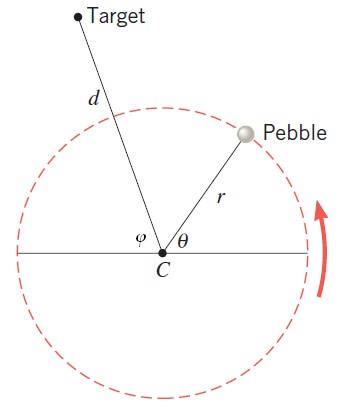Assignment:
Question 1. The drawing shows three particles far away from any other objects and located on a straight line. The masses of these particles are mA = 363 kg, mB = 517 kg, and mC =154 kg. Find the magnitude and direction of the net gravitational force acting on each of the three particles (let the direction to the right be positive).

particle A N
particle B N
particle C N
Question 2. One kind of slingshot consists of a pocket that holds a pebble and is whirled on a circle of radius r. The pebble is released from the circle at the angle θ so that it will hit the target. The angle ? in the drawing is 38.3°. The distance to the target from the center of the circle is d. (See the drawing below, which is not to scale.) The circular path is parallel to the ground, and the target lies in the plane of the circle. The distance d is four times the radius r. Ignore the effect of gravity in pulling the stone downward after it is released and find the angle θ.

Question 3. A car travels at a constant speed around a circular track whose radius is 2.8 km. The car goes once around the track in 280 s. What is the magnitude of the centripetal acceleration of the car?
m/s2
Question 4. The aorta is a major artery, rising upward from the left ventricle of the heart and curving down to carry blood to the abdomen and lower half of the body. The curved artery can be approximated as a semicircular arch whose diameter is 4.9 cm. If blood flows through the aortic arch at a speed of 0.33 m/s, what is the magnitude (in m/s2) of the blood's centripetal acceleration?
m/s2.